Let's Go To The San Diego Maritime Museum (Page Two)

About a five block walk to the museum (lower left-hand corner)
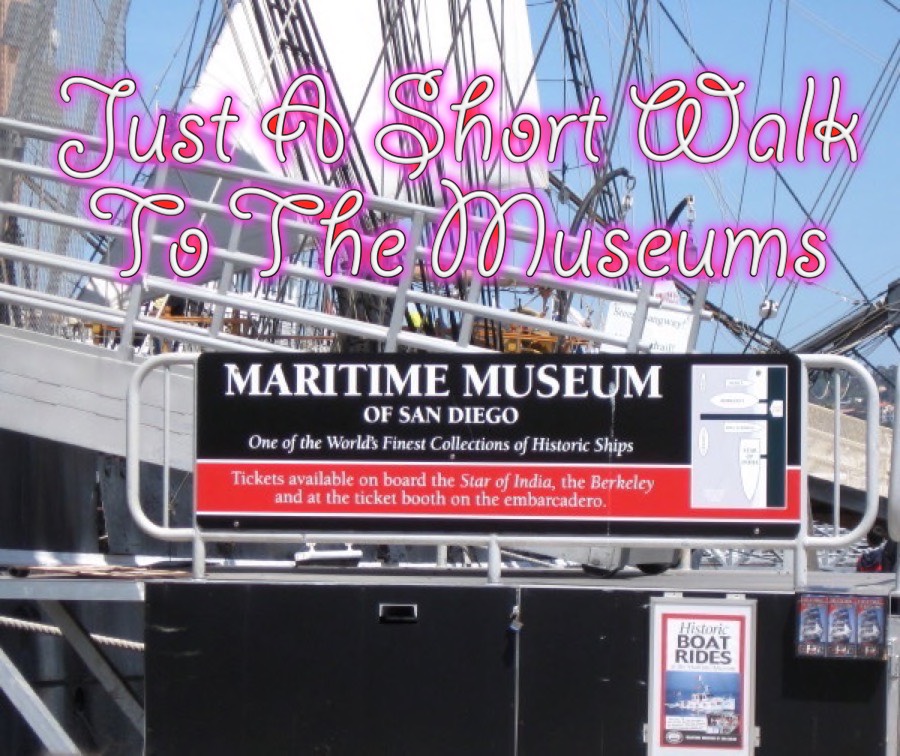
Did You Know? - The Maritime Museum of San Diego, established in 1948, preserves one of the largest collections of historic sea vessels in the United States. Located on the San Diego Bay, the centerpiece of the museum's collection is the Star of India, an 1863 iron bark. The museum maintains the MacMullen Library and Research Archives aboard the 1898 ferryboat Berkeley. The museum also publishes the quarterly peer-reviewed journal Mains'l Haul: A Journal of Pacific Maritime History.
The Maritime Museum is located on the west side of North Harbor Drive, between the ends of Ash Street and Grape Street, south of San Diego International Airport.
Current collection:
- Star of India, 1863 merchant bark
- Berkeley, 1898 ferryboat from the San Francisco Bay area
- Californian, 1984 replica of 1847 cutter C.W. Lawrence and official tall ship of the state of California
- America, 1995 replica of the 1851 yacht America that won the trophy that is now called the America's Cup[2]
- Medea, 1904 steam yacht that served in both World Wars
- Pilot, 1914 harbor pilot boat
- HMS Surprise, a 1970 replica of a Royal Navy frigate. Surprise was used in the film Master and Commander: The Far Side of the World. The ship also made an appearance in Pirates of the Caribbean: On Stranger Tides as HMS Providence.
- B-39, Soviet Foxtrot class submarine
- USS Dolphin, diesel-electric submarine launched in 1968 and decommissioned in 2007
- PCF-816 (formerly C24 or P24), 1968 Patrol Craft Fast that was transferred to Malta in 1971 and decommissioned in 2011
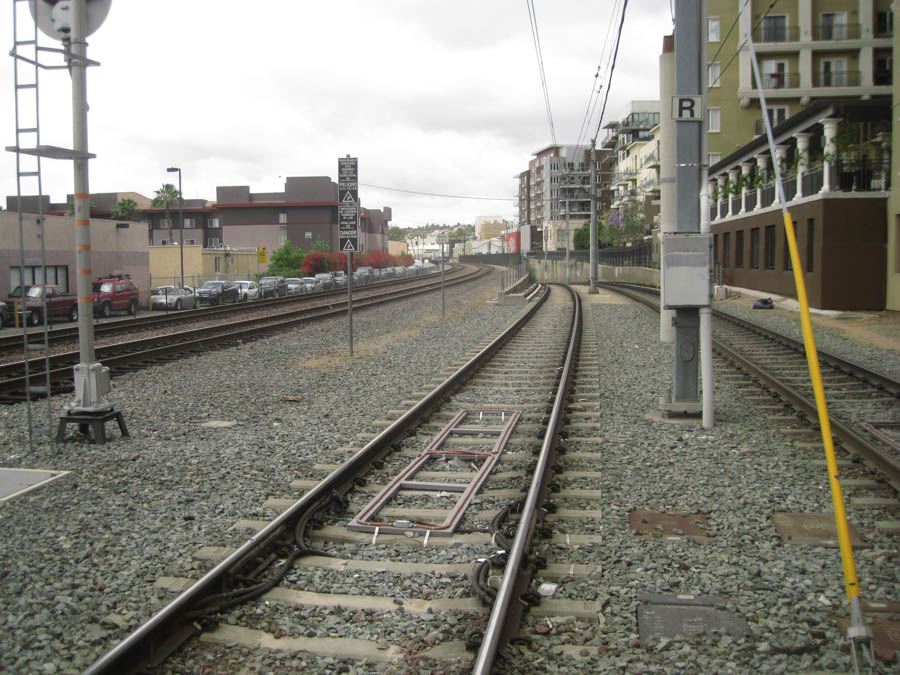
We walked down India Street for a block and then headed to the water

Our favorite San Diego Art Deco Building
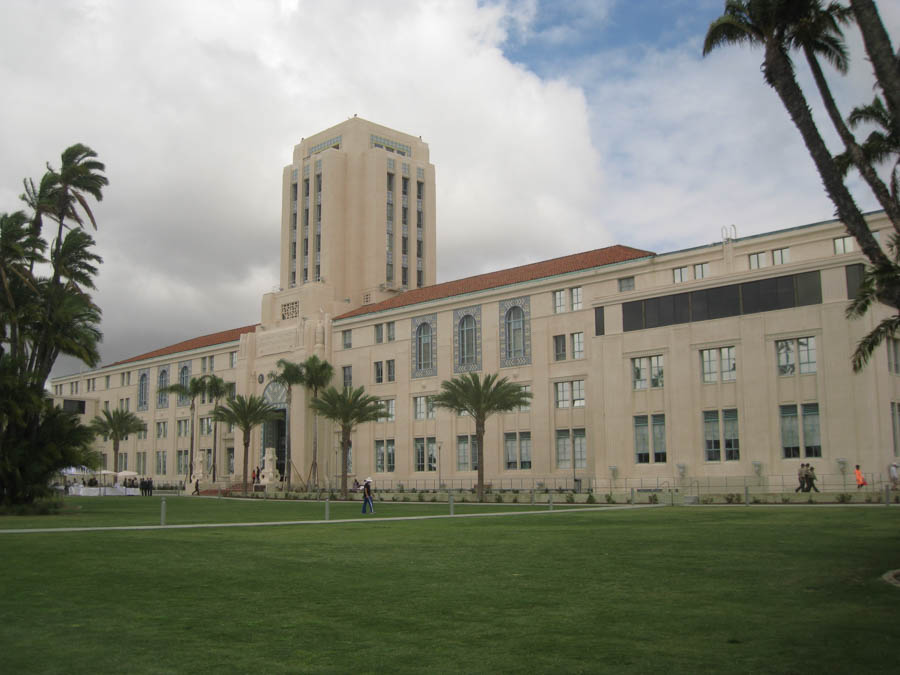
We toured this two years ago on a Saturday
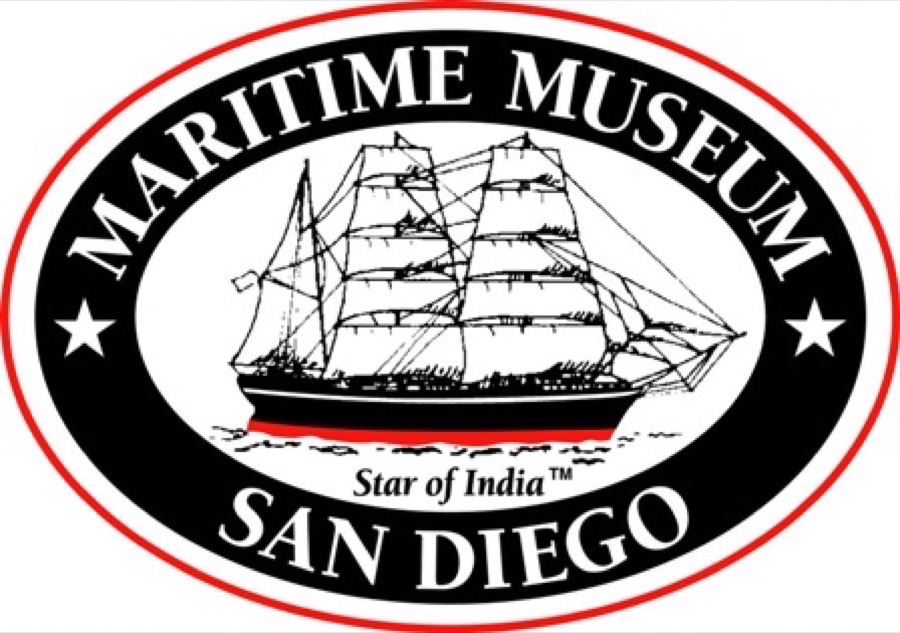
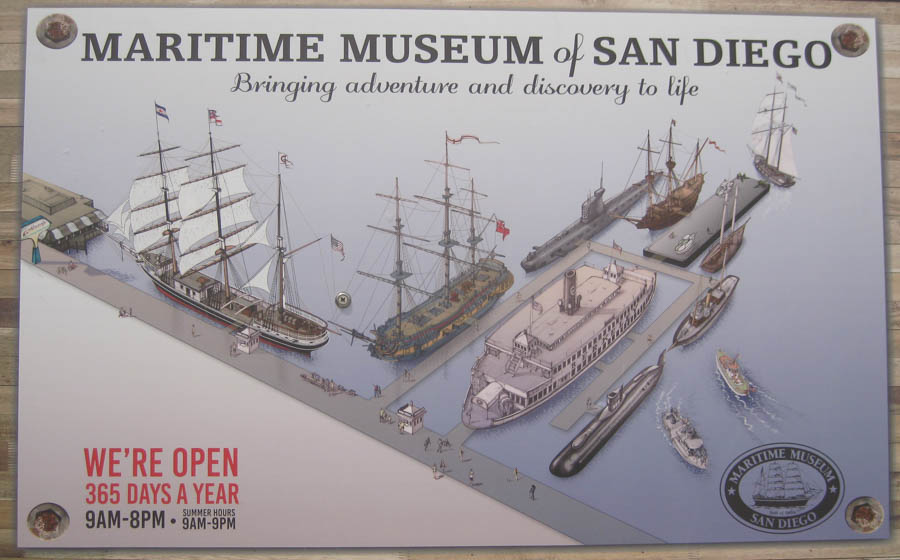

The Star Of India
Did You Know? - Star of India was built in 1863 at Ramsey in the Isle of Man as Euterpe, a full-rigged iron windjammer ship. After a full career sailing from Great Britain to India and New Zealand, she became a salmon hauler on the Alaska to California route.
Retired in 1926, she was not restored until 1962–63 and is now a seaworthy museum ship home-ported at the Maritime Museum of San Diego in San Diego, California.
She is the oldest ship still sailing regularly and also the oldest iron-hulled merchant ship still floating. The ship is both a California Historical Landmark and United States National Historic Landmark.
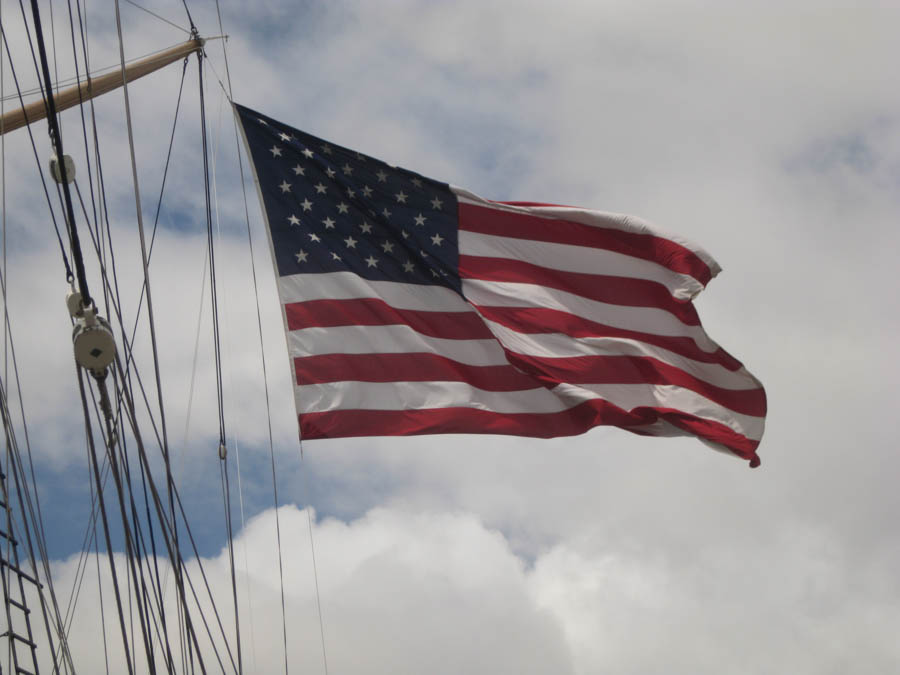
Old Glory was flying this afternoon
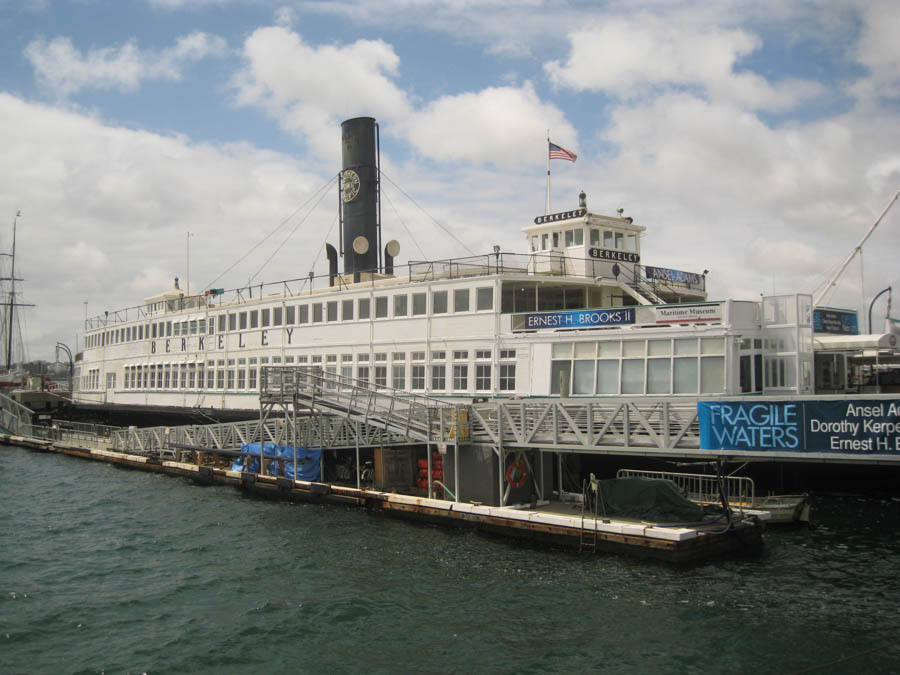
The Berkeley
Steam Ferry
Did You Know? - Berkeley was one of several ferryboats of the Southern Pacific Railroad that for sixty years operated on San Francisco Bay between the Oakland Pier and the San Francisco Ferry Building. Built in 1898 by the Union Iron Works of San Francisco, she served after the 1906 earthquake, ferrying refugees across the bay to Oakland.

The Steam Ferry was in excellent condition
Did You Know? - In the spring of 1958, she was taken out of service for repairs. She never returned to service, as Southern Pacific decided to end all ferry service on July 29, 1958. Berkeley was put up for sale, and was purchased by the Golden Gate Fishing Company to be used as a whaling processing facility. Before she was put to this use, however, she was sold to ferryboat enthusiast and businessman Bill Conover. Conover had Berkeley docked in Sausalito, a small town on the Bay in Marin County, and converted her into a gift shop called "Trade Fair"

What a great sight to see!
Time To Visit The B-39 Submarine

Did You Know? - B-39 was a Project 641 (Foxtrot-class) diesel-electric attack submarine of the Soviet Navy. The "B" (actually "Б") in her designation stands for большая (bolshaya, "large") — Foxtrots were the Soviet Navy's largest non-nuclear submarines. B-39 is now a museum ship on display at the Maritime Museum of San Diego, California, United States.
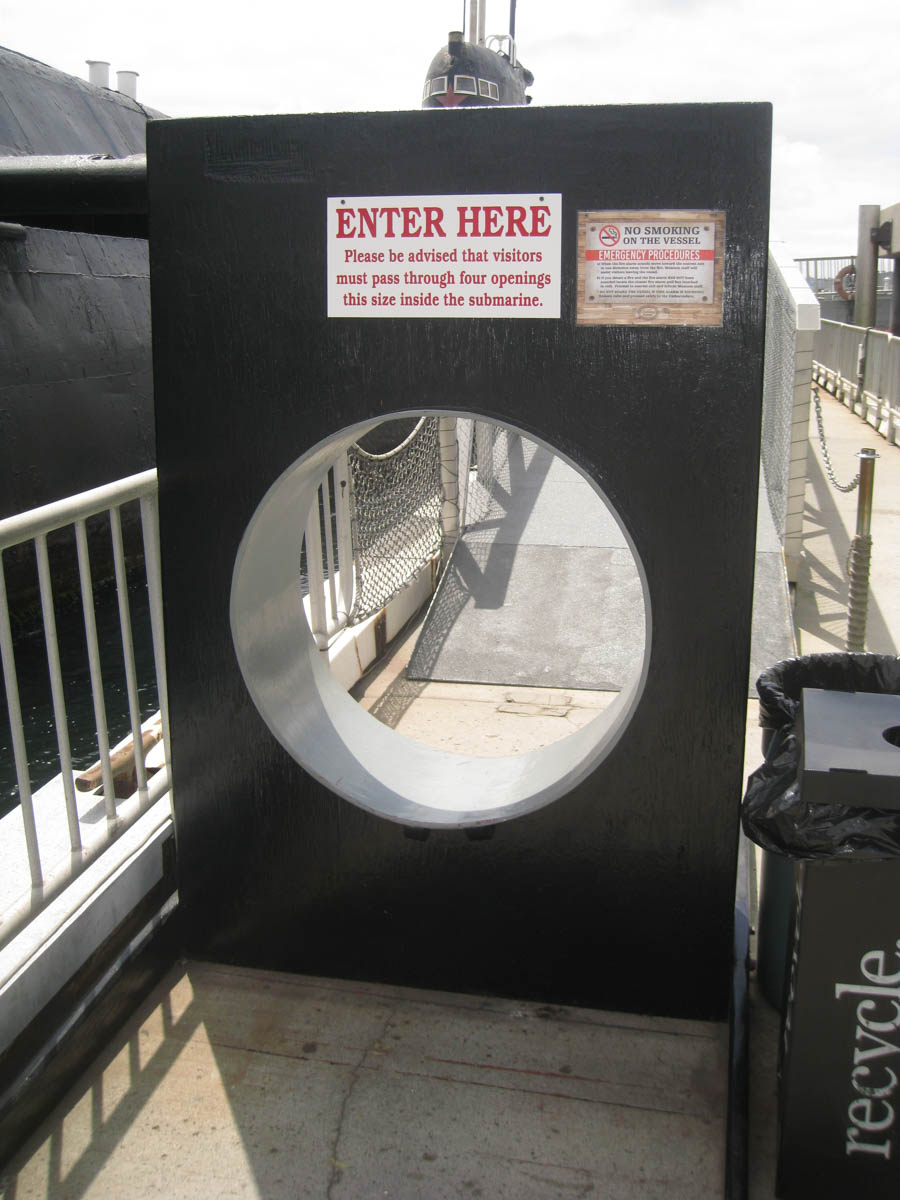
This was NOT as easy as it might look
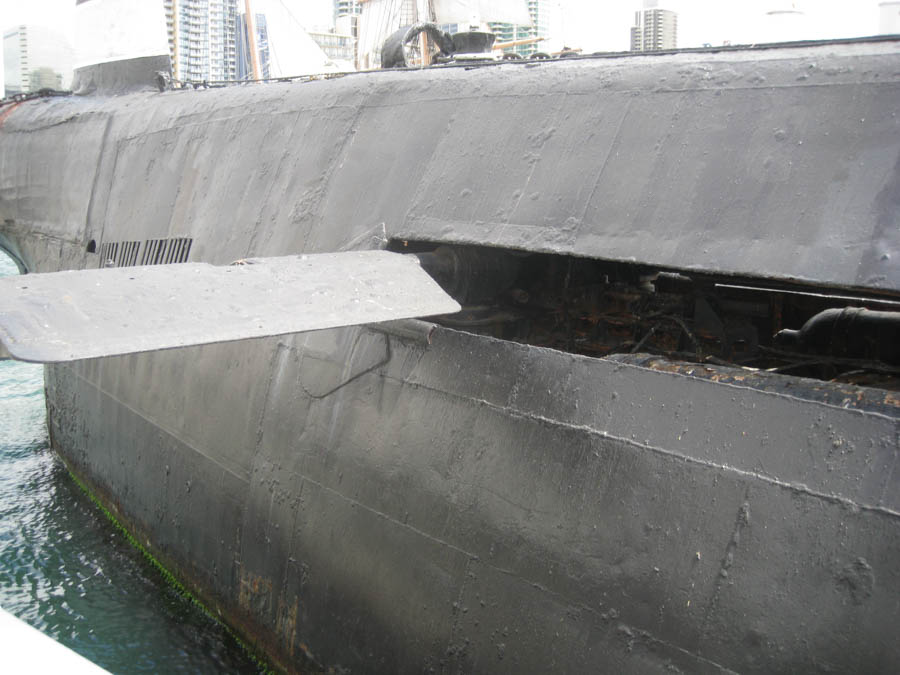
The flipper was all hydraulic
Did You Know? - Interests in submarines extends to royalty and presidents. The King of England and the King and Queen of Spain are among those who have made submerged cruises in submarines. As a result of a trip in an early United States submarine, President "Teddy" Roosevelt ordered extra compensation for personnel serving in the "Silent Service." President Harry Truman made a 440 foot dive in a captured German submarine. The first President to cruise aboard a nuclear submarine was President Eisenhower who rode the USS SEAWOLF out of Newport, Rhode Island on September 26, 1957.

The surface of the vessel was not very smooth
Did You Know? - The first boat known to have been navigated under water was built in 1620 by a Dutchman, Cornelius Van Drebbel. Van Drebbel is said to have developed a chemical which would purify the air and allow the crew to stay submerged for extended periods.
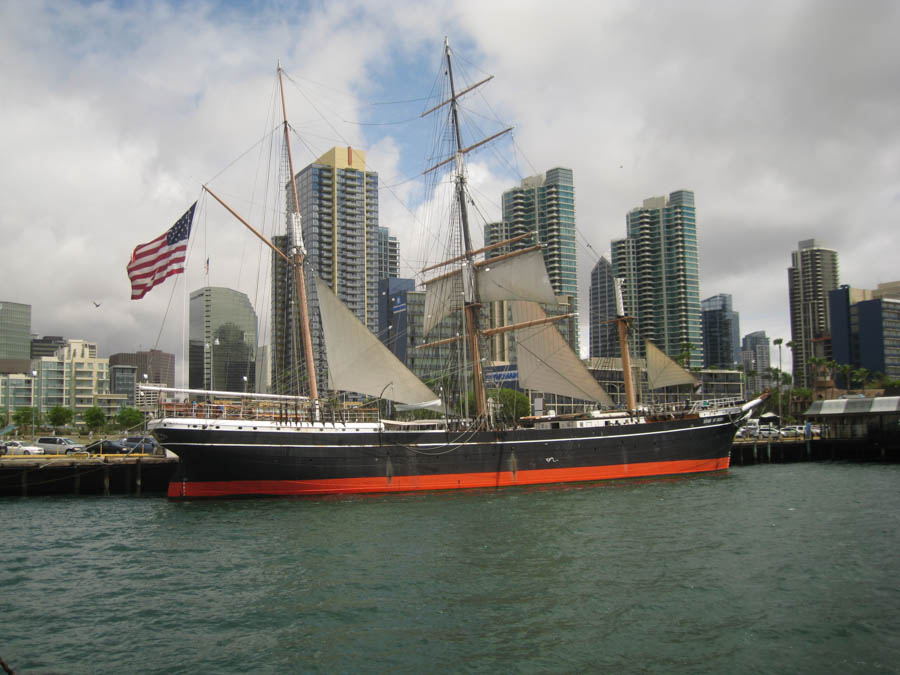
Target spotted... Man the torpedoes
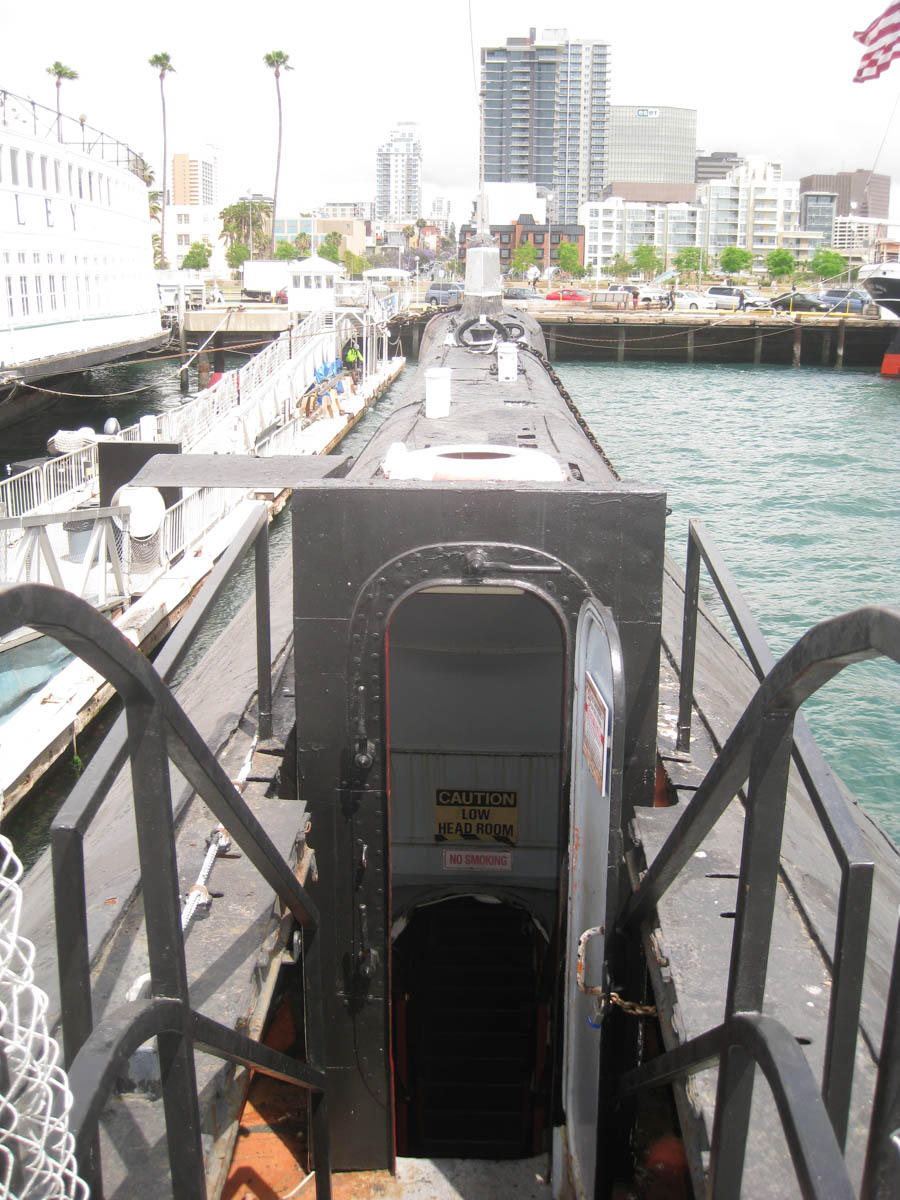
Into the mouth of the giant!

Torpedo room aft
Did You Know? - Her keel was laid down on 9 February 1962 at the Admiralty Shipyard in Leningrad (now known as Saint Petersburg). She was launched on 15 April 1967 and commissioned on 28 December 1967.

The business end of the ship! The ship held 22 torpedoes
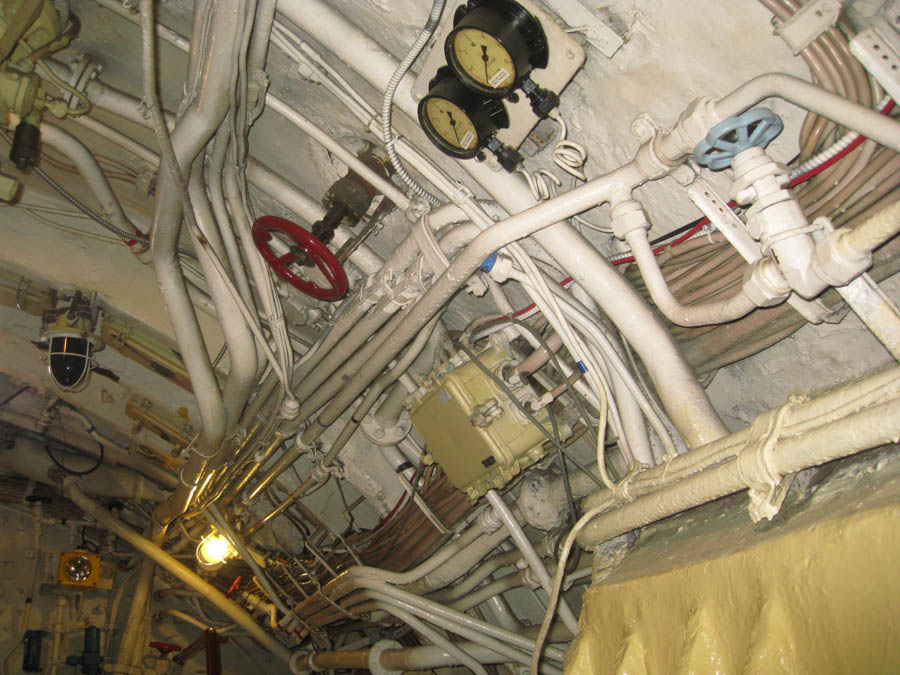
A plumbers delight
Did You Know? - B-39 was decommissioned on 1 April 1994 and sold to Finland. She made her way from there through a series of sales to Vancouver Island in 1996 and to Seattle, Washington, in 2002 before arriving in San Diego, California, on 22 April 2005 and becoming an exhibit of the Maritime Museum of San Diego.

Nitrogen bottles
Did You Know? - Modern submarines can travel faster submerged than they can on the surface. They can fully submerge in less than a minute.

The passage ways were tiny and the hatches even smaller!

Not very pretty... But functional

Squeeze... Squish... She did it!
Did You Know? - Per cubic inch, there is more science packed into a submarine than into any other warship. Submariners say 'There is room for everything aboard a submarine except a mistake.'
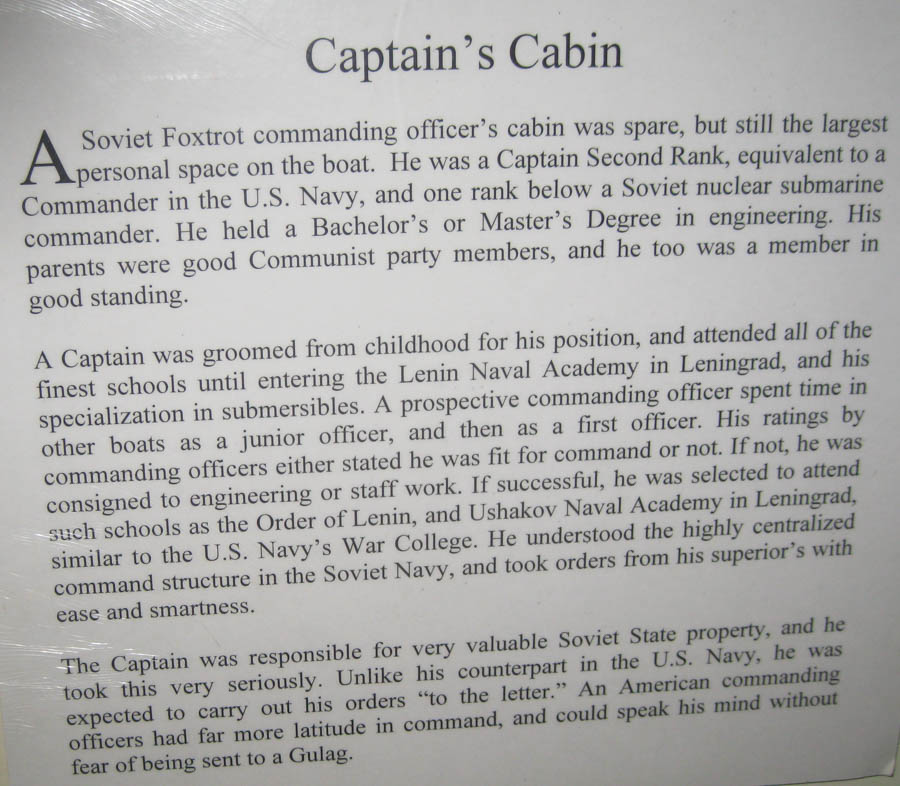
Interesting...
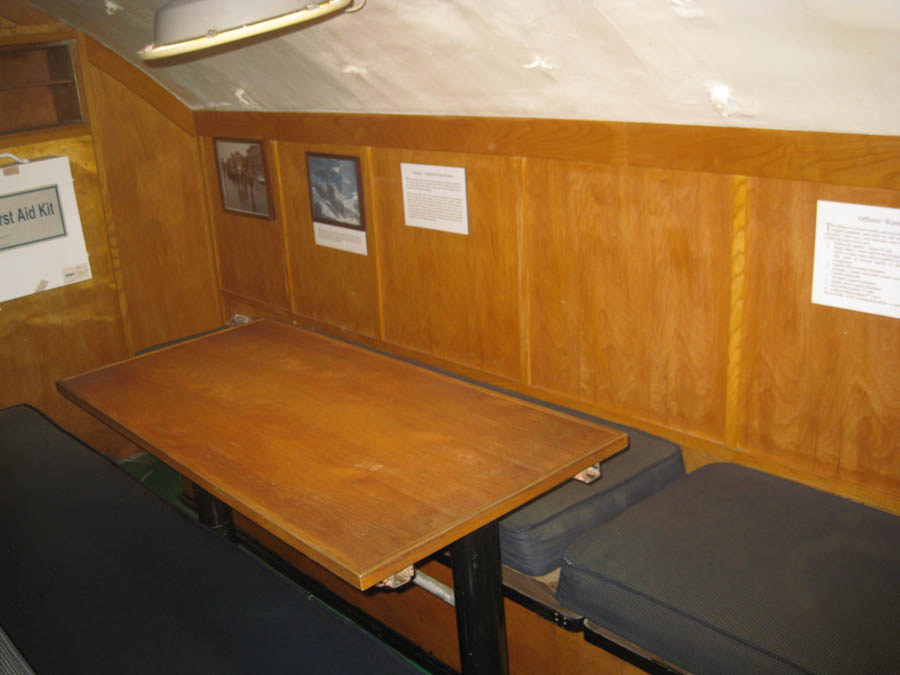
The ward room... Doubled as the surgeon's operating table!
Did You Know? - In World War II the Germans lost 782 submarines, the Japanese lost 130, and the United States lost only 52 submarines. Twenty-three of the Japanese subs lost were victims of the American Submarine Service.

Eek! Another mouse trap!
Did You Know? - The Soviets never named their submarines, at least not all of them. The only official designation for this sub is the builder's number, B-39. It had several nicknames throughout its years, and the Soviets liked to change the hull numbers on their subs to keep us guessing, so it never had a permanent hull number either. Launched in 1974, the B-39 is a diesel –electric attack submarine of the NATO-designated Foxtrot class.
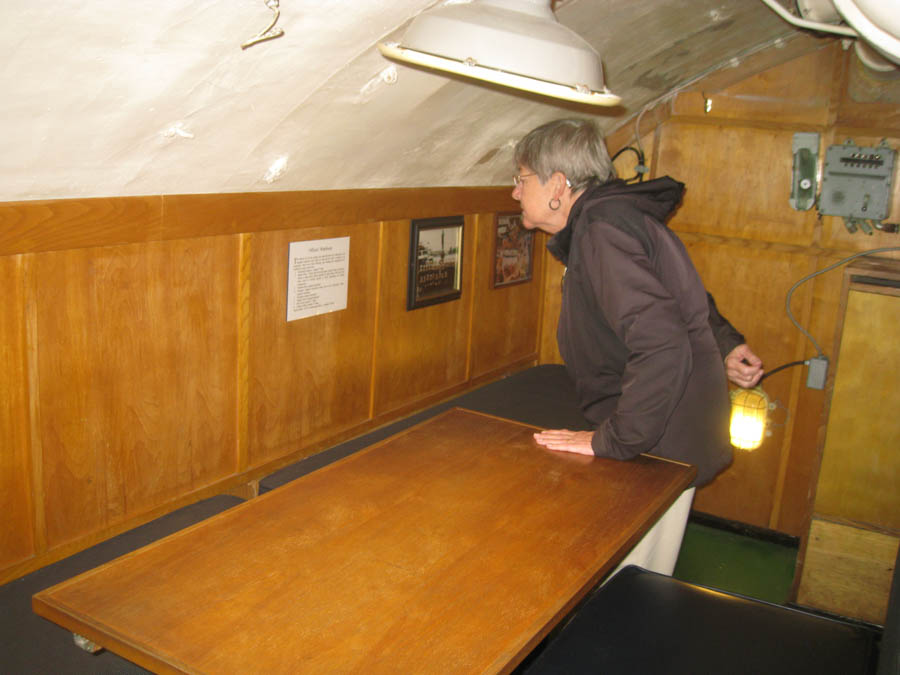
Sue studies the signs!

Almost the last one!
Did You Know? - In their history, submarines were called by many names such as 'eel boats', 'plunging boats', 'devil divers', and 'pig boats'. Technically, and by size, the submarine is a ship, but it has been called a boat since its earliest days, and the term is steeped in tradition. Submariners almost invariably call their ships 'boats".

Amazing number of valves to control the ship!

An electric toilet? No... Just massive numbers of cables!
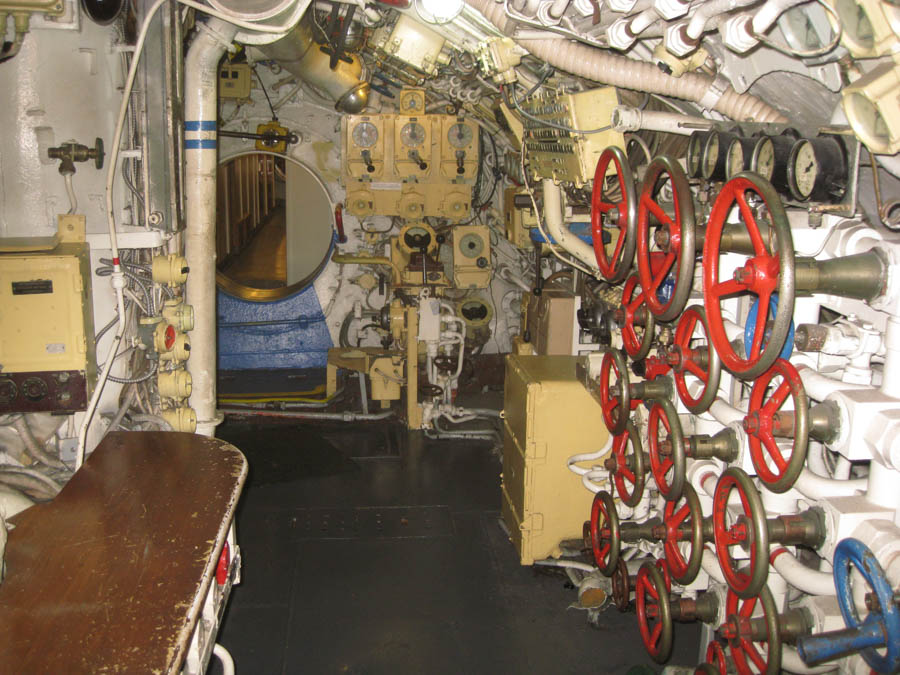
At least they were kind of color coded!
Did You Know? - The USS NAUTILUS steamed 60,000 miles on a lump of Uranium the size of a golf ball. A diesel powered submarine would have required 3,000,000 gallons or 300 railway tank cars of oil.
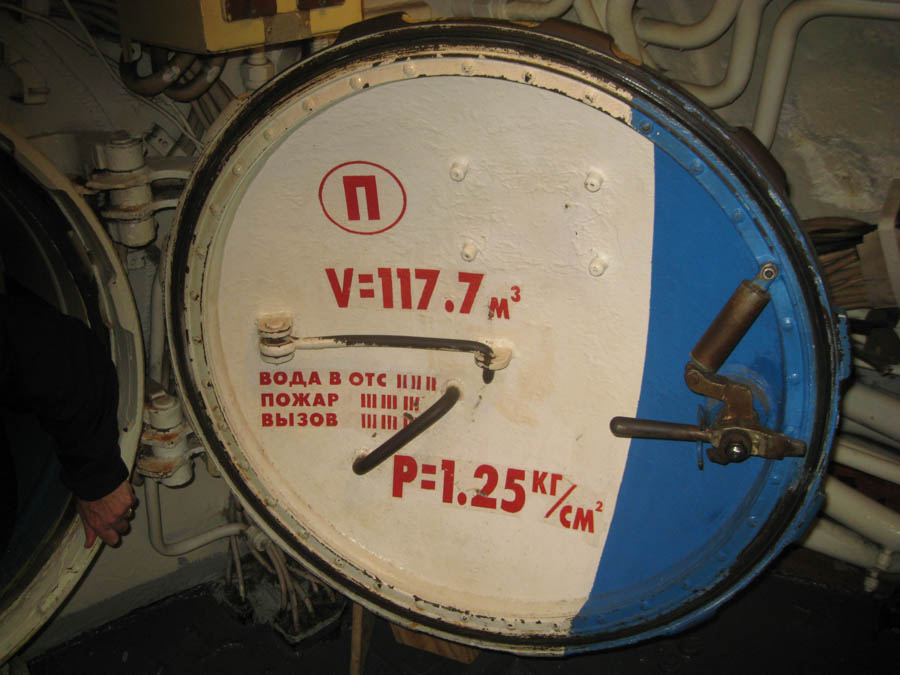
There were four water tight hatches
(five compartments)

No kidding... No place for a tall person!

To the engine room!
Did You Know? - The USS NAUTILUS made history by cruising submerged from the pacific to the Atlantic Ocean, passing under the North Pole at 11:15 p.m. EDST on August 3, 1958.

Food was stuffed everywhere!
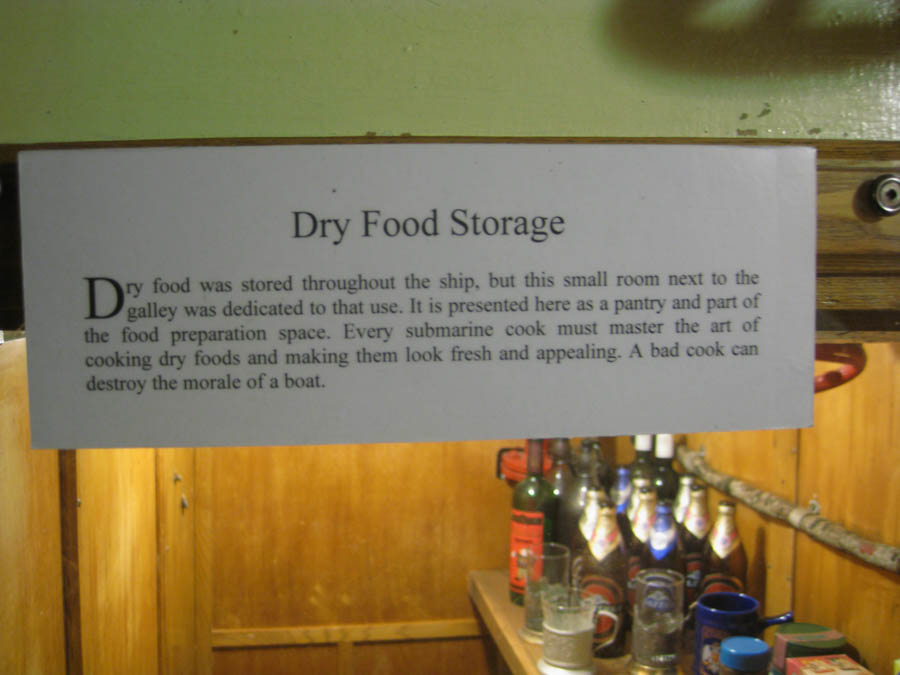
Good cooks were essential!
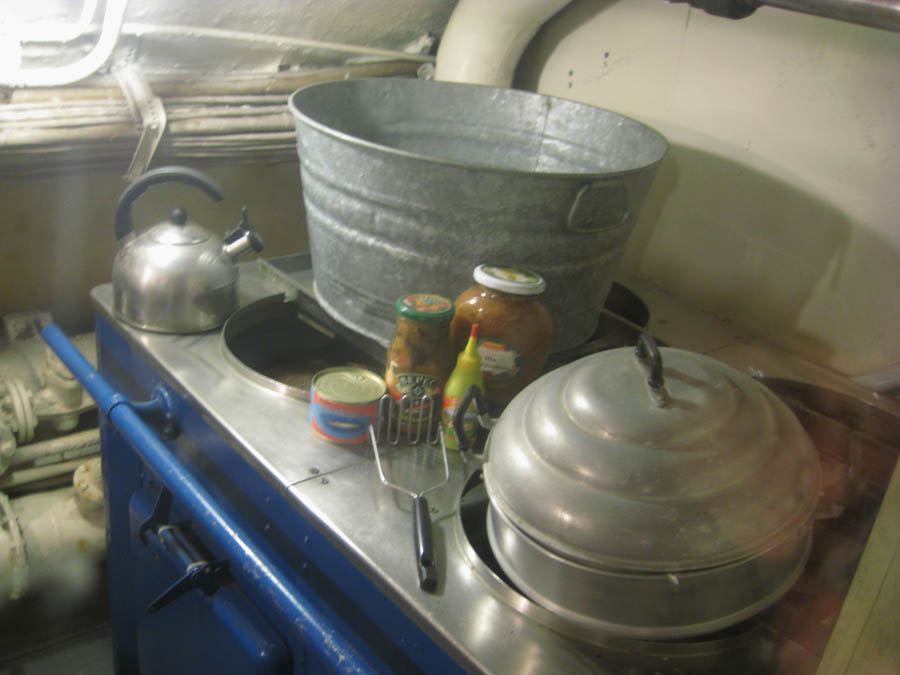
This little kitchen served 78 people!
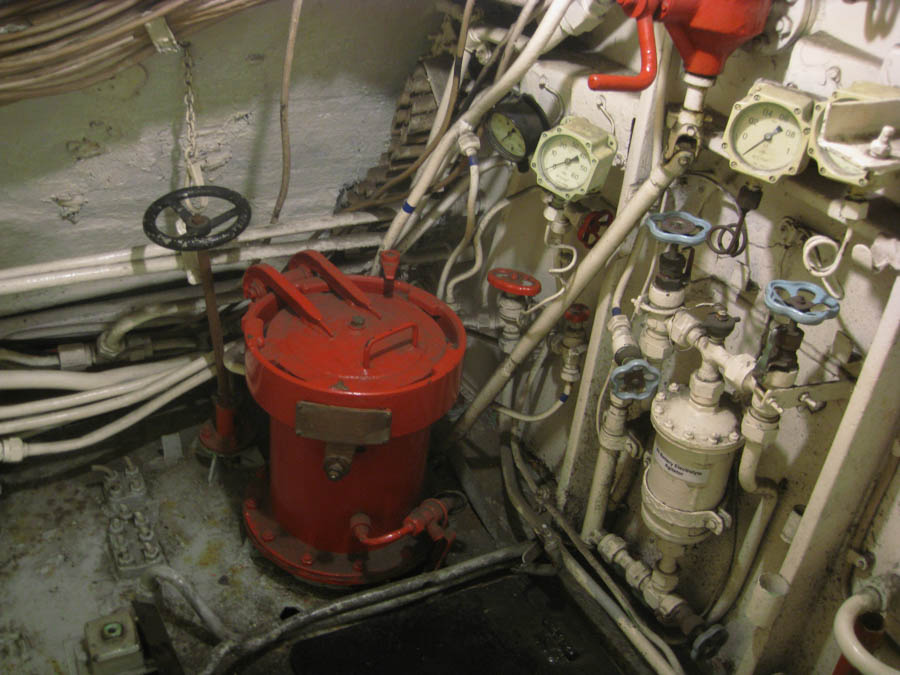
The trash ejector! Amazing!
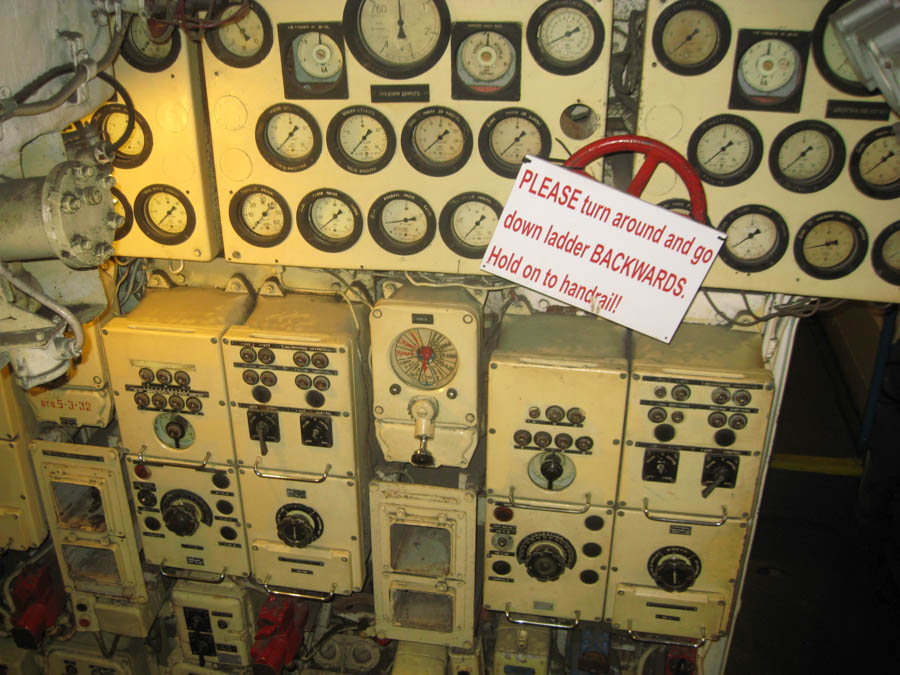
Power generation was from the diesel engines
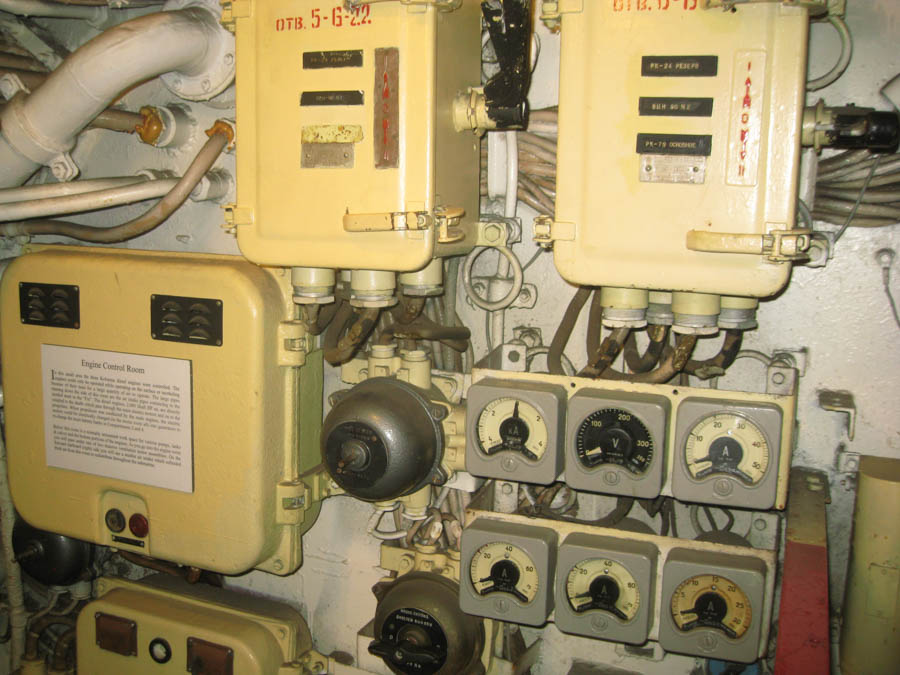
Engine control area
Did You Know? - USS Stingray once saved a downed American aviator by having him grab her periscope to tow him out of reach of enemy fire.

Two of the three 2,000 HP diesel engines

The diesel turned generators which drove the 1500 and 2500 HP electric motors
giving the ship a speed of 17 knots... Not too bad!
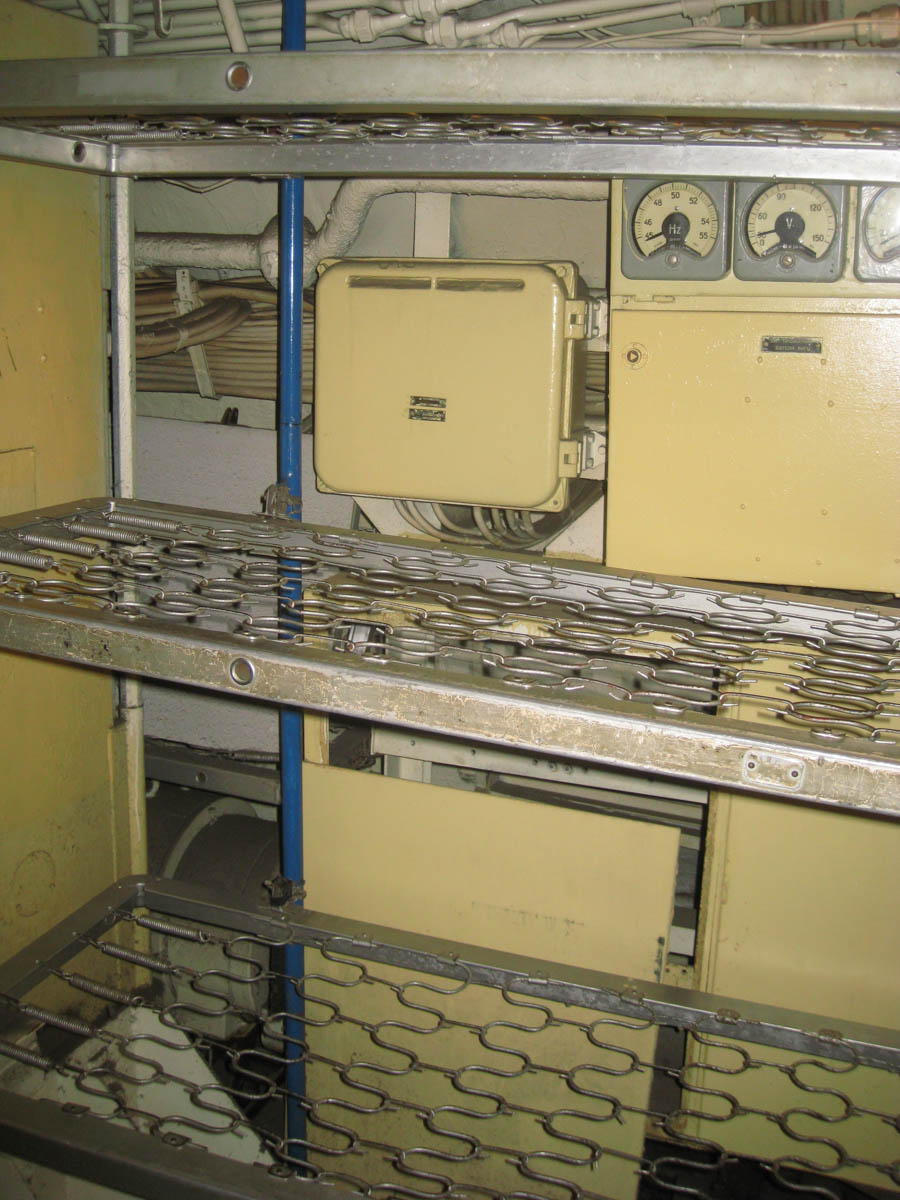
The bunks were put wherever space was available... The crew hot-bunked

Electric motor controls and direction controls
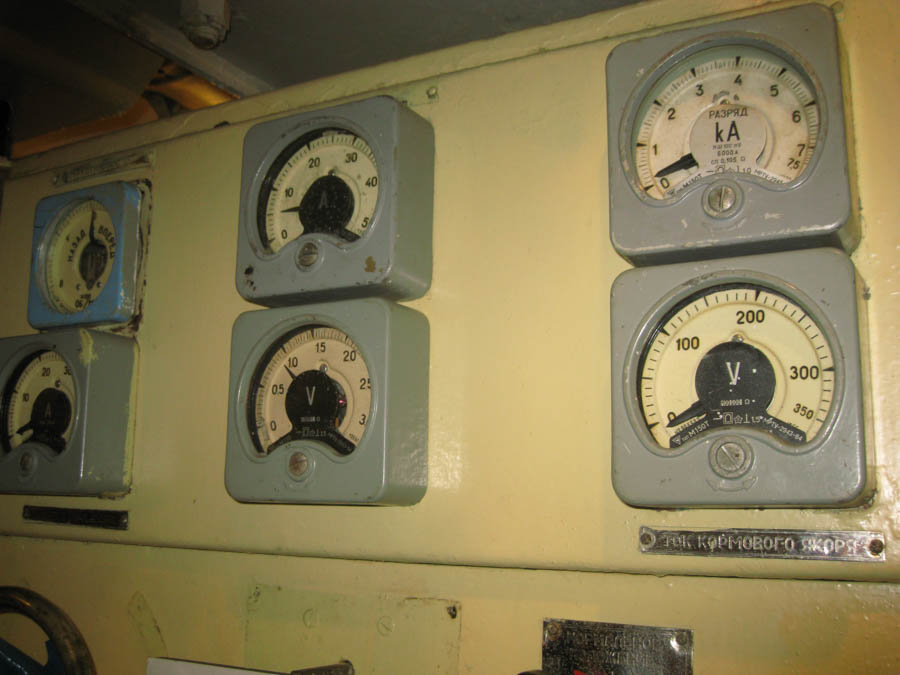
Yes... The meter measures kilo-amperes

Last hatch... Next room is forward torpedo room

The crew potty... One for 67 crew!
Did You Know? -
Type: Project 641/Foxtrot
Launched: 15 April 1967
Commissioned: 28 Dec 1967
At: Admiralty Shipyard, Leningrad
Length: 89.9 meters
Beam: 7.4 meters
Draft: 5.9 meters
Displacement: 1952 tons surfaced, 2475 tons submerged
Powerplant: three Kolomna 2D42M 2000 hp diesel engines, three electric motors, two 1350 hp and one 2700 hp, one 180 hp auxiliary motor
Speed: 16 knots surfaced, 15 knots submerged, 9 knots snorkeling
Depth: 296 meters
Complement: 12 Officers, 10 Midshipmen, 56 Seaman
Armament: 6 bow torpedo tubes and 4 stern torpedo tubes; up to 22 torpedoes

"The hatches seem to be getting smaller and smaller"
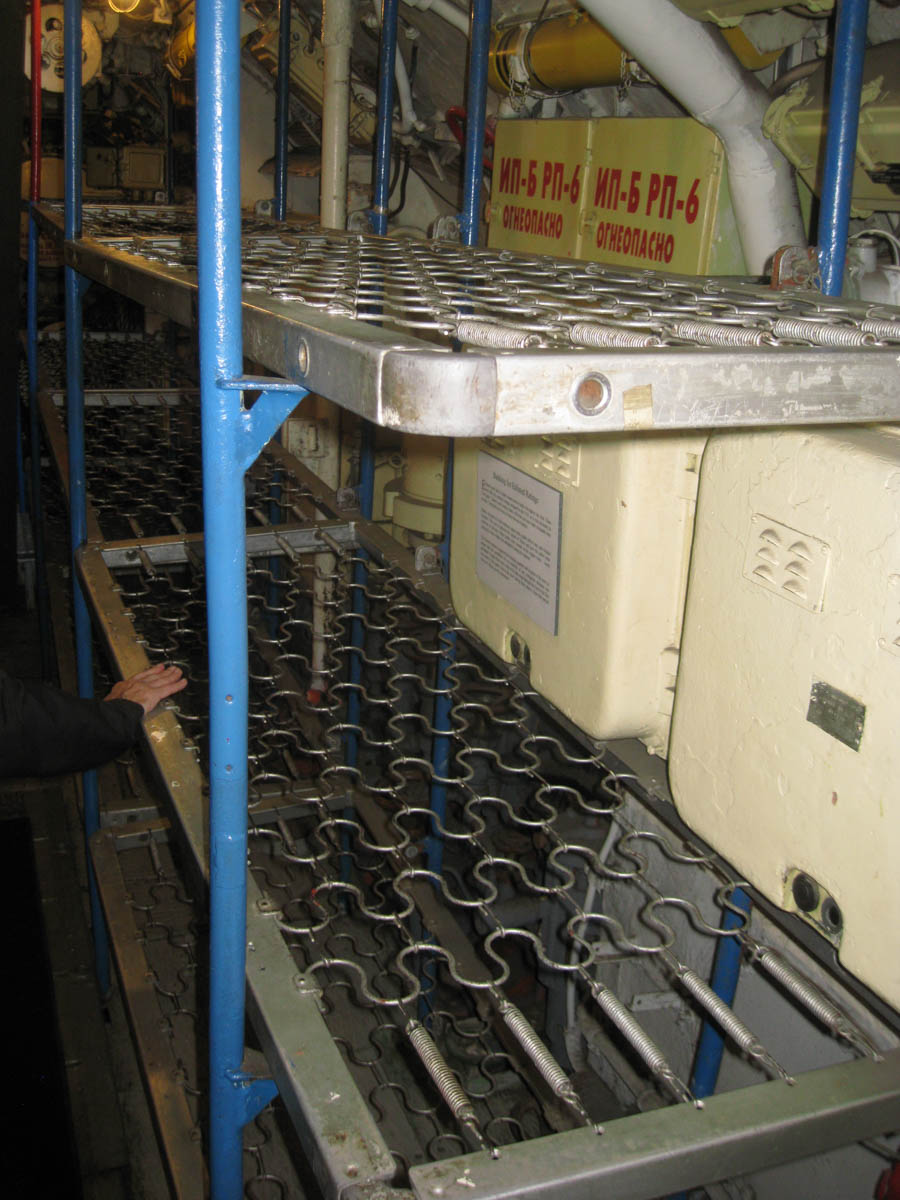
Remember not to jump out of bed!

Four forward looking torpedoes

Walking to the front of the boat made easy by handrails!

Back at the beginning!

The conning tower was closed to the public

"Where are we going next?"

We headed for the second submarine
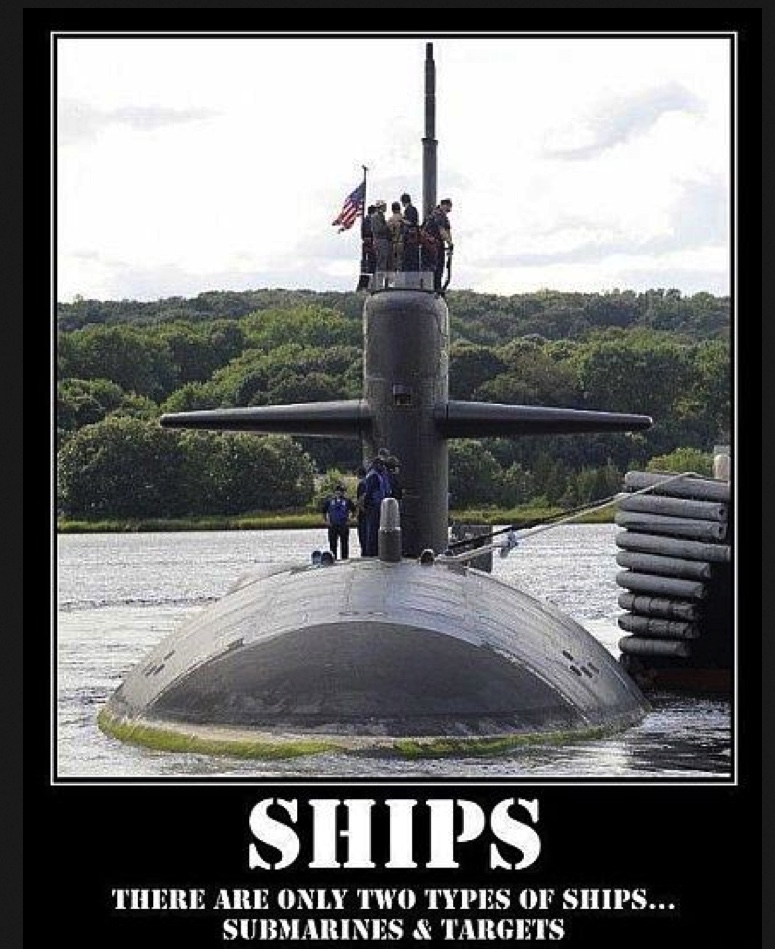
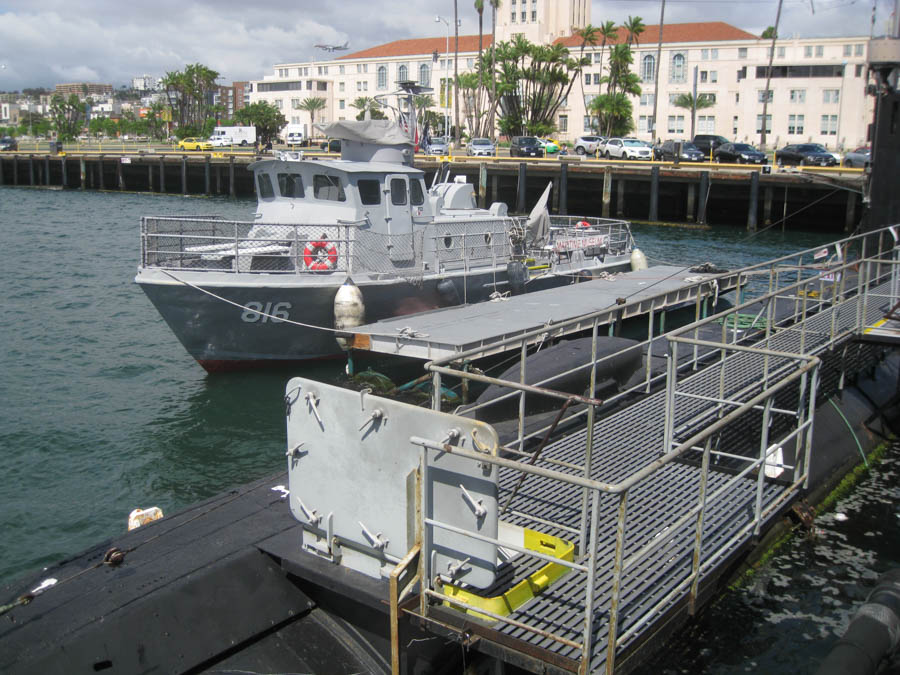
The small gray vessel is a Swift Boat...
p.s. John Kerry served on one of these for a few hours!

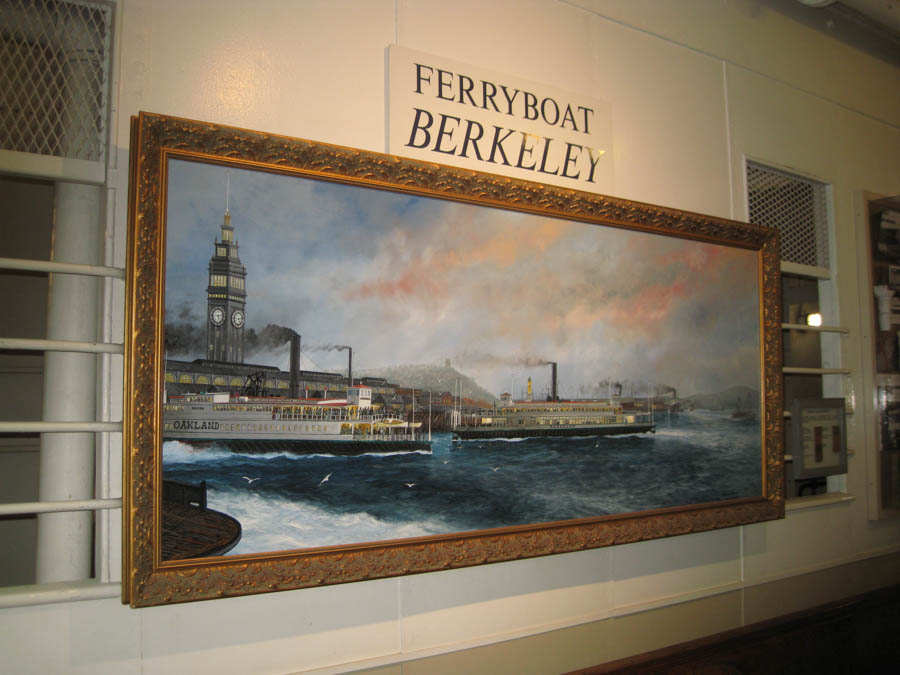
There were several ships like the Berkeley at the turn of the century
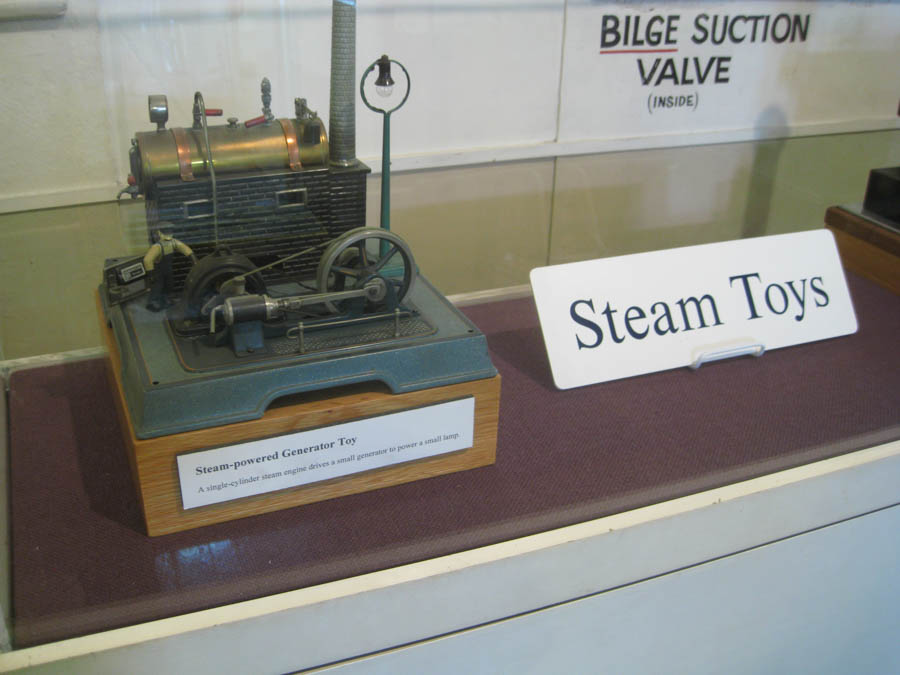
Did You Know? - n 1781 James Watt patented a steam engine that produced continuous rotary motion. Watt's ten-horsepower engines enabled a wide range of manufacturing machinery to be powered. The engines could be sited anywhere that water and coal or wood fuel could be obtained. By 1883, engines that could provide 10,000 hp had become feasible.
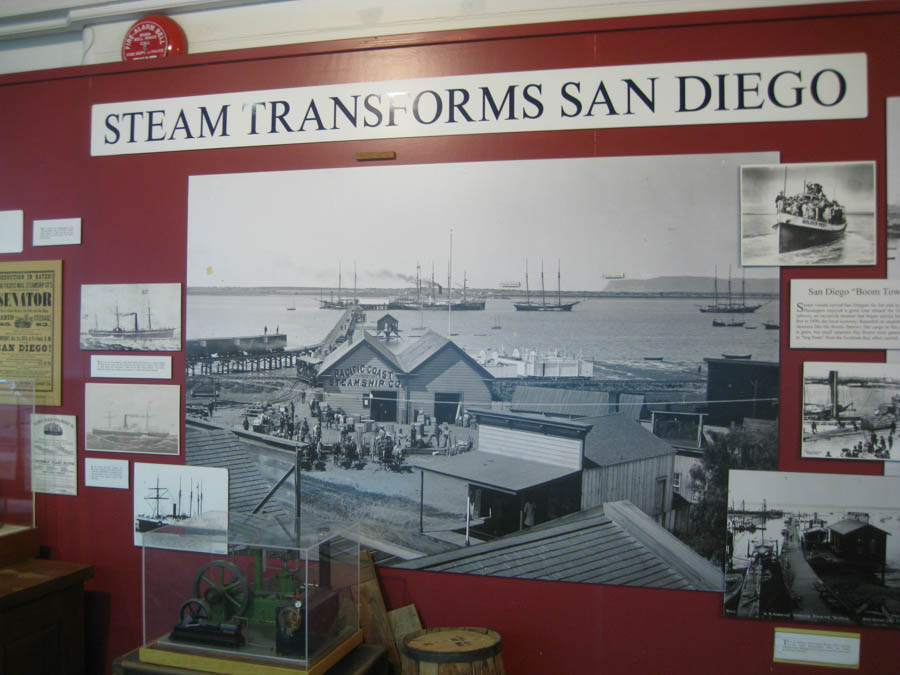
Steam drove the country for many years

The helm of the Berkeley
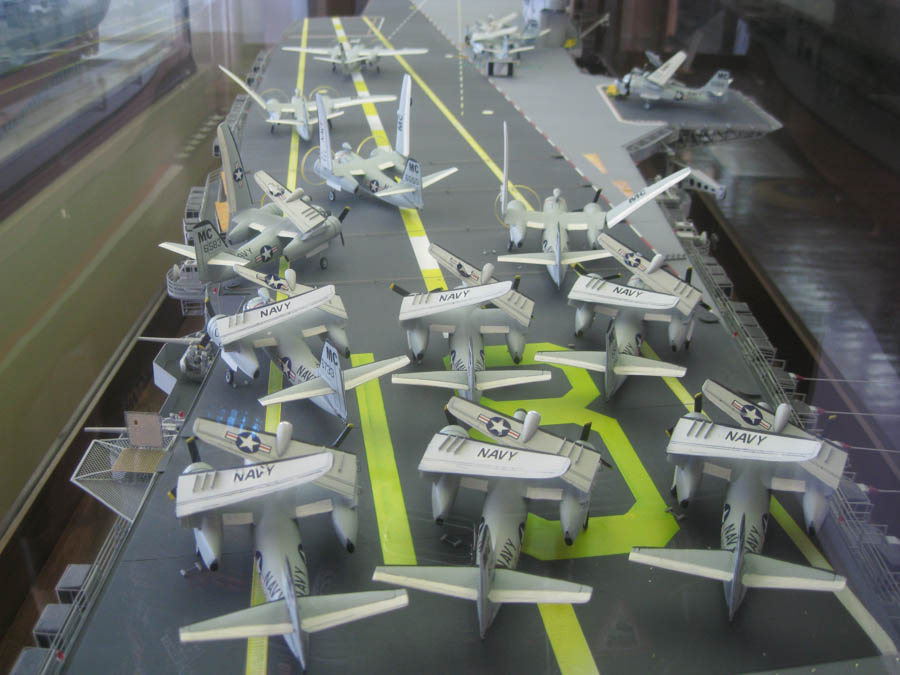
The collection of models was amazing

Oops!
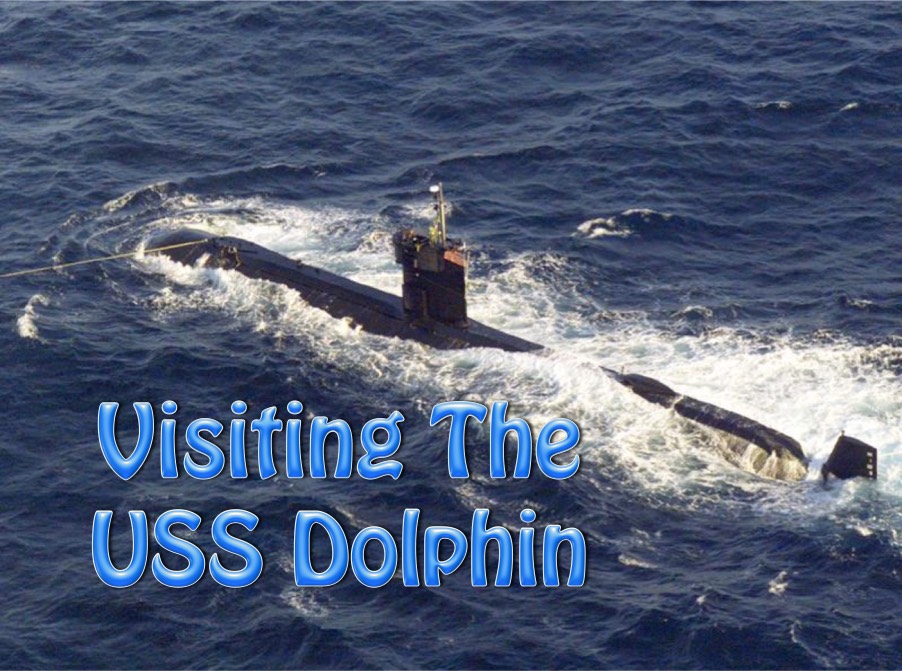
We got to visit history....
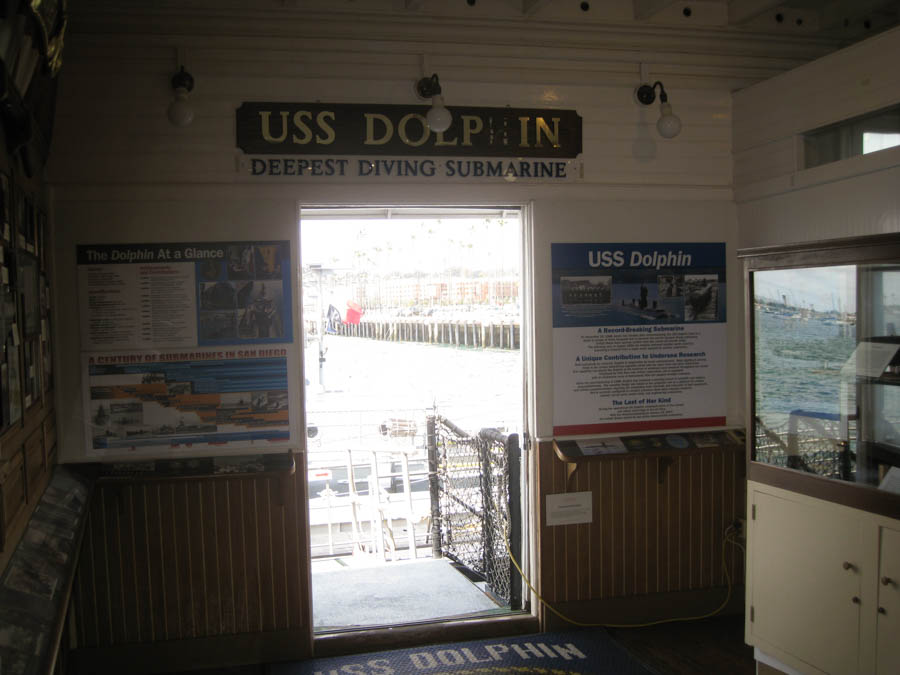
What an amazing ship!
Come right on in
Did You Know? - USS Dolphin (AGSS-555) was the United States Navy's last operational diesel-electric, deep-diving, research and development submarine.
Her keel was laid down on 9 November 1962 at the Portsmouth Navy Yard, Kittery, Maine. She was launched on 8 June 1968 sponsored by Mrs. Daniel K. Inouye (the wife of the senator for Hawaii), and commissioned on 17 August 1968 with Lieutenant Commander J.R. McDonnell in command.
Despite her recent repair and upgrade, Dolphin was decommissioned on 15 January 2007 and was struck from the Naval Vessel Register on the same date. She is now a museum ship in San Diego Bay under the management of the San Diego Maritime Museum.
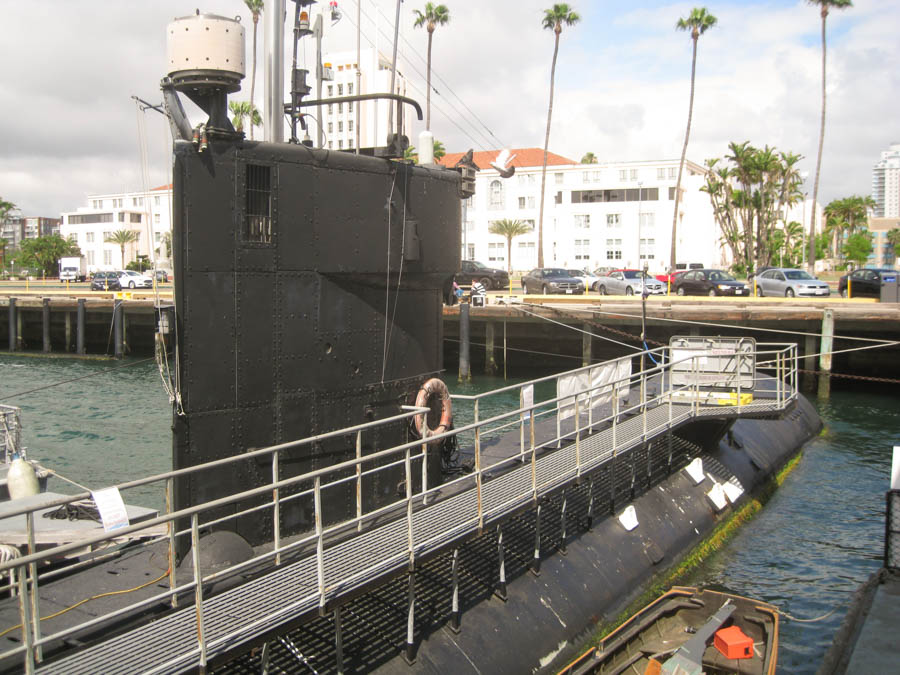
An interesting construction approach... Only one water tight compartment

One long shell!
Did You Know? - The single most significant technical achievement in the development of Dolphin is the pressure hull itself. It is a constant diameter cylinder, closed at its ends with hemispherical heads, and utilizes deep frames instead of bulkheads.
The entire design of the pressure hull has been kept as simple as possible to facilitate its use in structural experiments and trials. Hull openings have been minimized for structural strength and minimum hull weight, in addition to eliminating possible sources for flooding casualties.
The submarine has no snorkel mast; her one hatch must be open while her diesels are running.
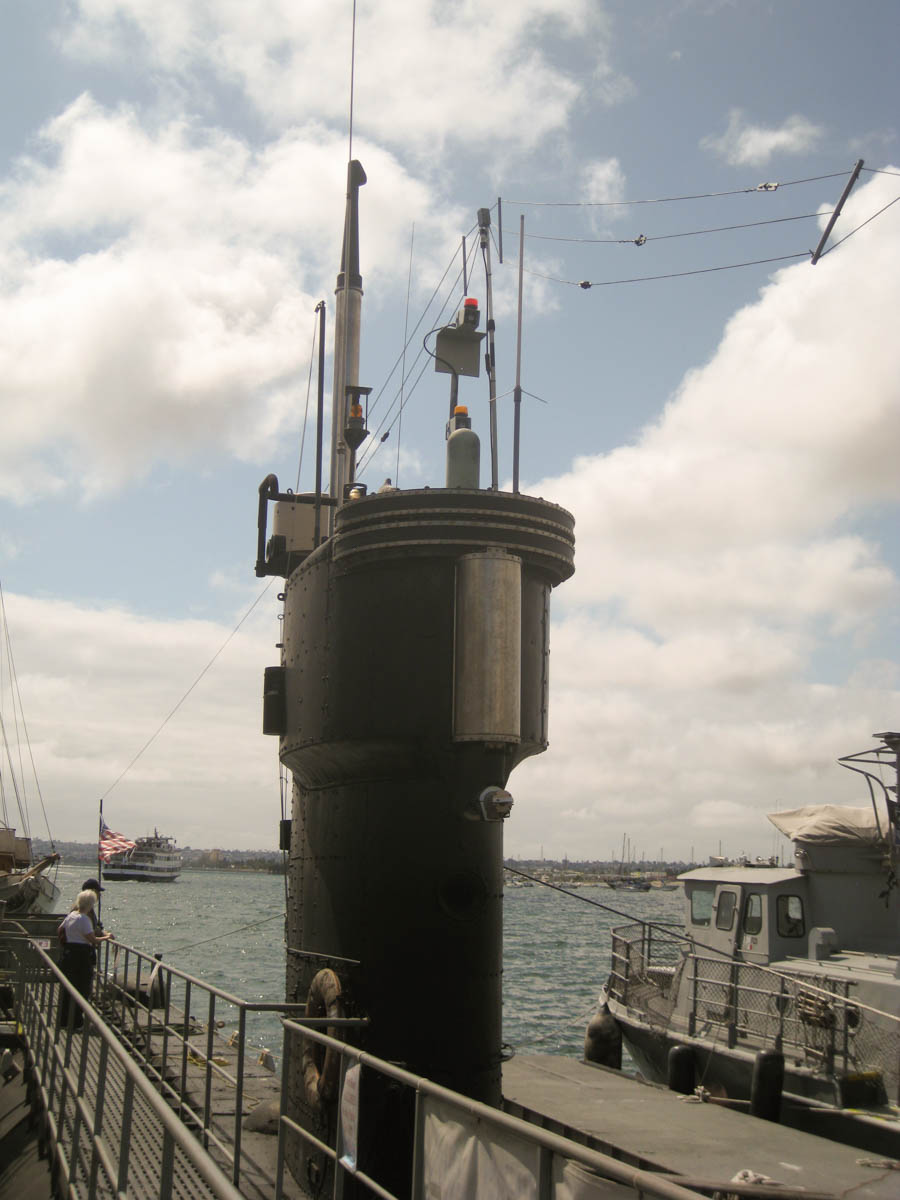
Loaded with instrumentation
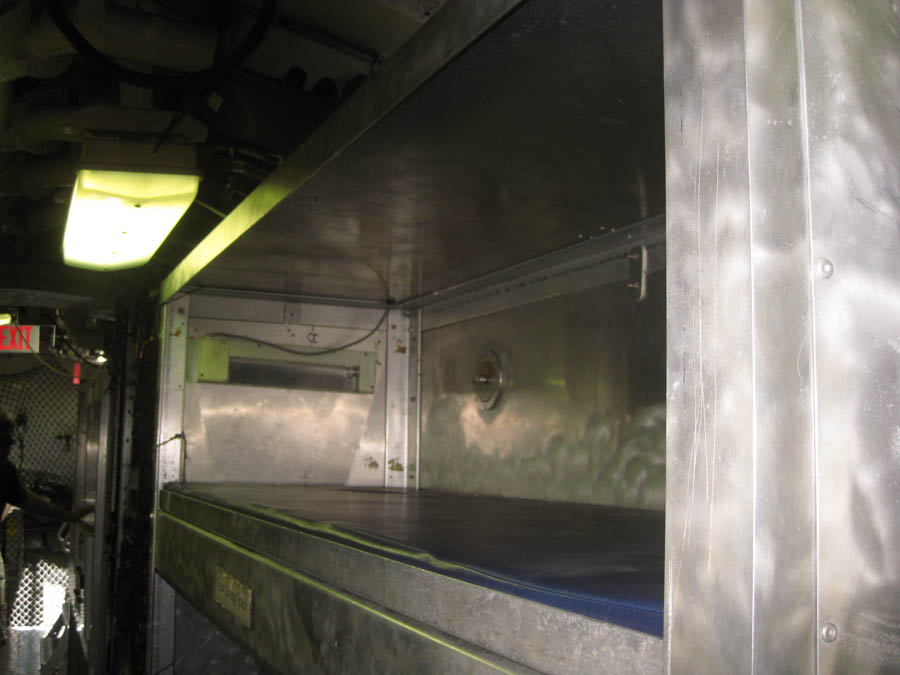
Stainless steel bunks

Designed to have loads of room for scientific instruments
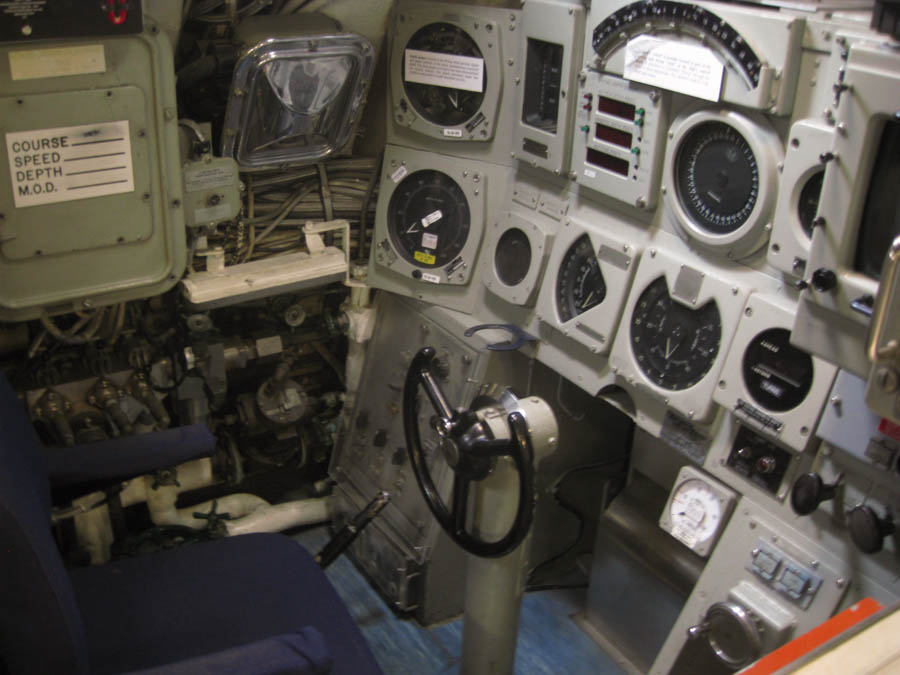
The control room was tiny
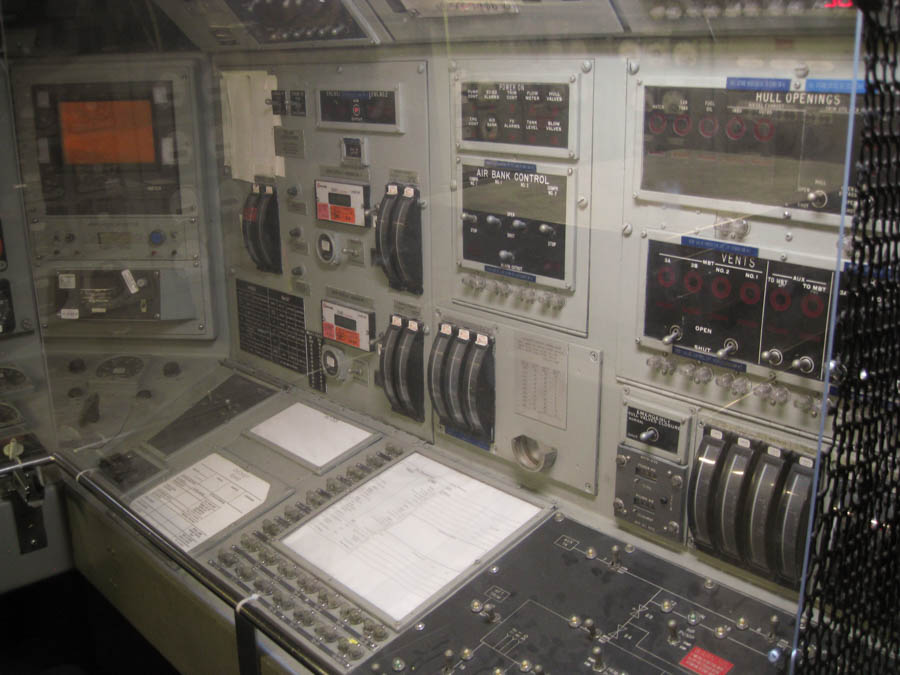
Ballast control area
Did You Know? - In August 1969, Dolphin launched a torpedo from the deepest depth that one has ever been fired.

Power control area

The drive motors were DC

Whose knees are they?
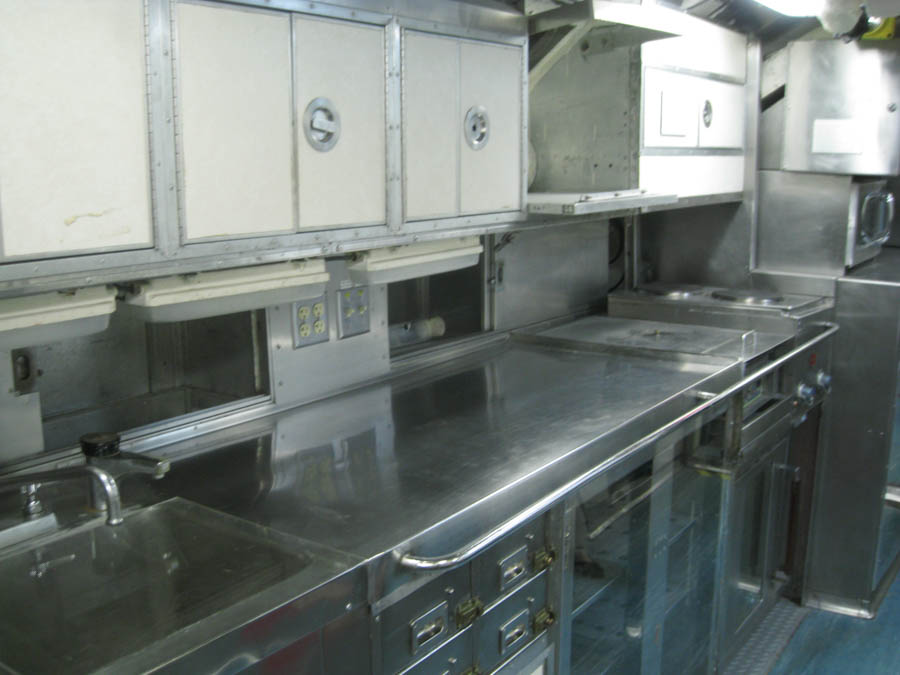
Sue was admiring the kitchen compared to the Russian submarines

"What could I cook up here?"
Only need to cook for 27! Should be easy!

Valves everywhere!

Mouse eye view...
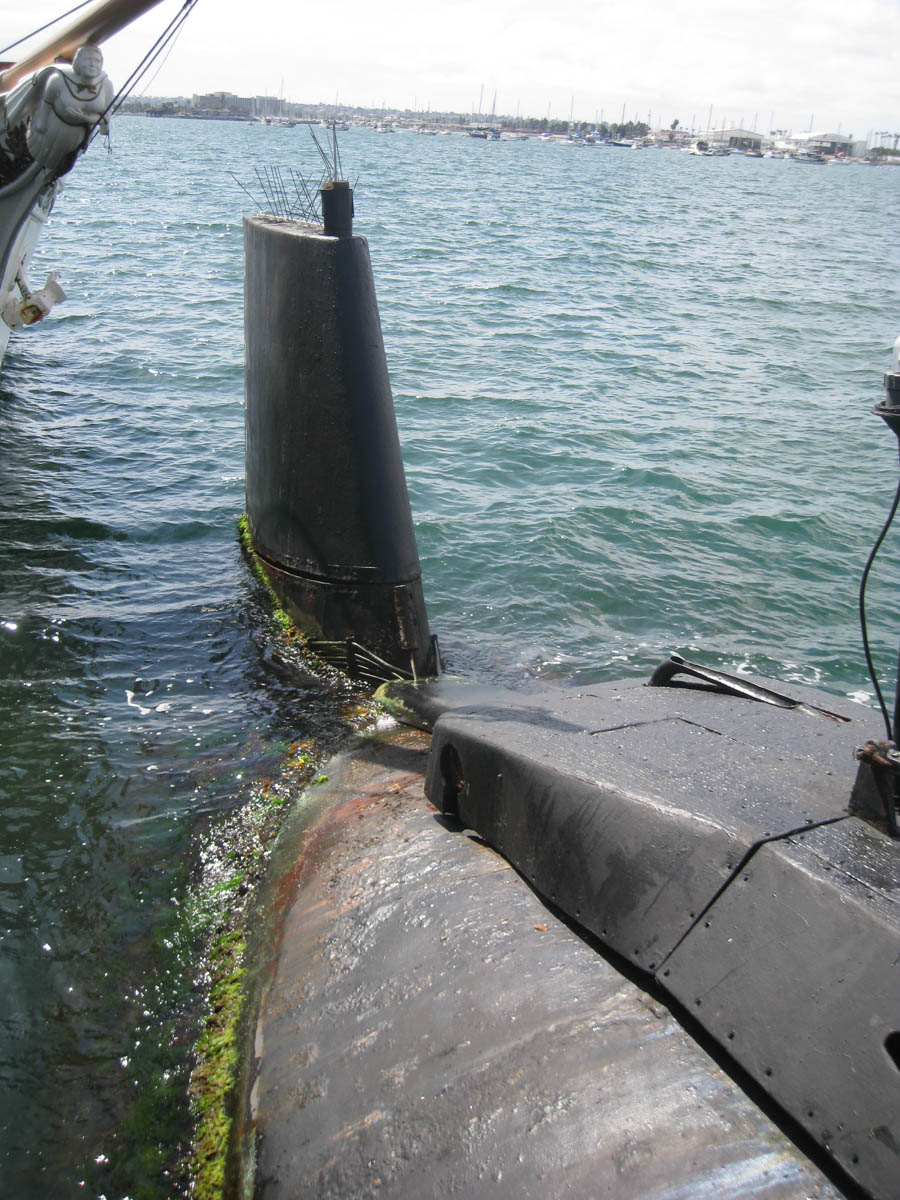
The tail section was unique. A 20-ton keel section to be
jettisoned by explosive bolts for surfacing under emergency conditions
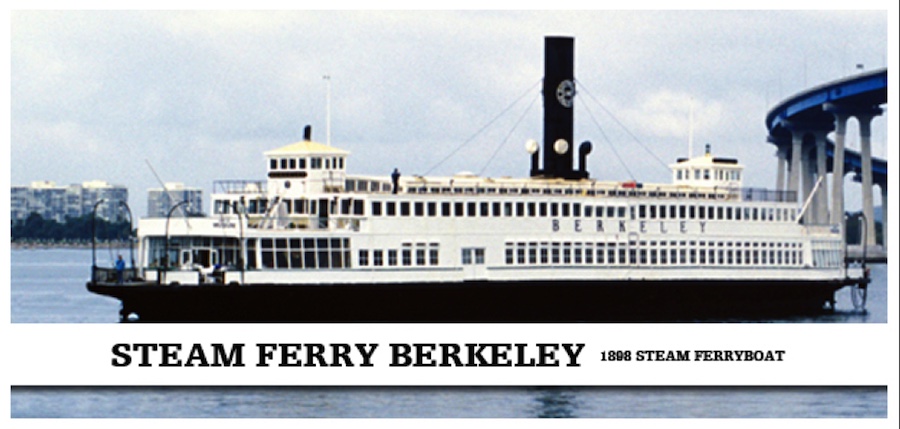

The Berkeley could handle 1,600 people
Did You Know? - Berkeley was one of several ferryboats of the Southern Pacific Railroad that for sixty years operated on San Francisco Bay between the Oakland Pier and the San Francisco Ferry Building. Built in 1898 by the Union Iron Works of San Francisco, she served after the 1906 earthquake, ferrying refugees across the bay to Oakland.

We calculated that the upper floor could handle 600+ individuals
The downstairs heeld almost 1,000 people originally

Love the dance floor!
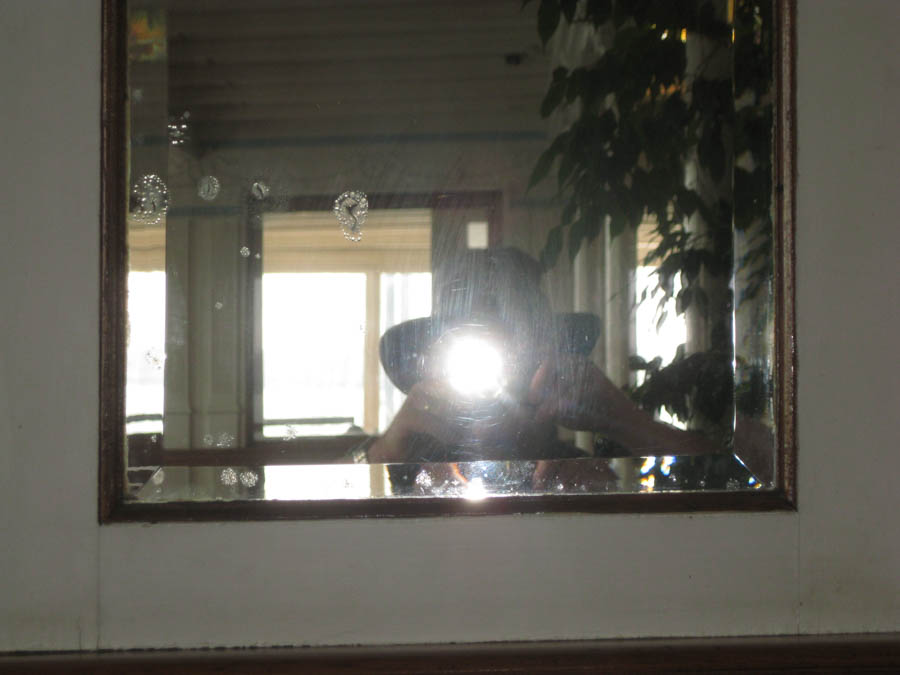
One eyed monster

The workmanship is amazing

